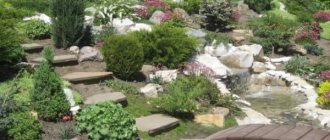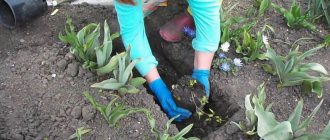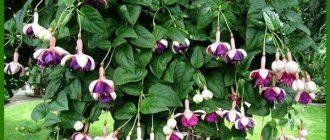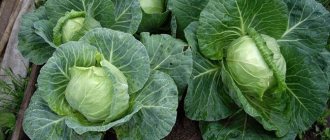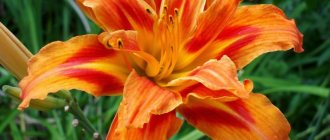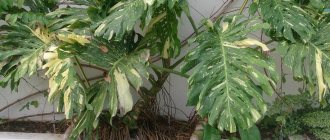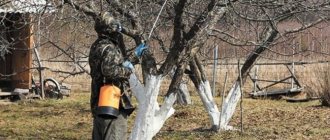Agrostemma is a flower known to the world for a very long time. This is a clove herbaceous plant that grows mainly in the Mediterranean region. The ancient Greeks gave their name to this fascinating flower. It itself comes from two words: “agros”, which means harvest, and “stemmantos”, meaning wreath. Simply put, the name of this plant can be translated as field wreath. However, this is exactly how our ancestors used it: wreaths woven from Agrostemma were considered the most beautiful. Not surprising, given that its stems were supposedly created precisely for this purpose.
Agrostemma: characteristics of a herbaceous plant
Photo of Agrostemma flower
Agrostemma is an annual flower. In addition, it is incredibly common in modern Asia and Europe. It has taken root very well here thanks to the local temperate climate.
As already mentioned, the Agrostemma stem is ideal for weaving wreaths. It is almost completely straight and very thin, but at the same time extremely long: up to one meter in length. However, the stem doesn't take up much space and actually looks quite elegant.
Agrostemma leaves are quite thin, and therefore they are almost invisible on the stem. Each shoot ends in an incredibly beautiful inflorescence. It is so beautiful because it has an incredibly regular geometric shape and a very bright and rich pink hue.
Each flower reaches about five centimeters in diameter and has strictly five petals. Moreover, they are also painted extremely “correctly”, if this, of course, can be said about coloring. On each petal there is a very clear gradient from deep pink to white, which looks like it was made in some graphics program. Agrostemma blooms and pleases the eye with its beauty for a very long time: the first flowers appear at the beginning of summer, but the last ones fade only in September. And sometimes this stunning flower can last even until October.
Alternative uses
Agrostemma in a bouquet
Agrostemma has also proven itself well as a cut crop: a bouquet can last at least 7 days. Moreover, the doll looks beautiful both in arrangement and on its own.
Agrostemma has found quite wide use in folk medicine, despite its toxicity. Use fresh leaves, infusions, ointments. Common cockle seeds are used as a hemostatic, wound-healing, diuretic, expectorant, and anthelmintic. The herb has analgesic, diuretic, hypnotic, and hemostatic properties. An infusion of the herb can relieve toothache when rinsed. But it is important to follow the proportions and recipe.
Source
How to grow Agrostemma flowers?
Photo of Agrostemma flower
Naturally, the fact that Agrostemma is a field plant does not mean that it is ready to grow under absolutely any conditions. Unfortunately, only weeds can boast of this.
The first thing you need to learn is that Agrostemma loves sunlight , and therefore you need to choose a place for planting it that is as illuminated as possible on your site. The longer the flower is exposed to direct rays, the better.
However, this requirement for sunlight is completely paid off by the fact that, thanks to its adaptability to field conditions, Agrostemma is not at all afraid of blowing drafts.
Agrostemma also loves a very specific soil , and this must be taken into account if you want to plant this wildflower on your site. The soil in which Agrostema will be grown should be especially light. Also, a characteristic that it must have is looseness and drainage.
These qualities are simply necessary for the soil to plant Agrostemma, since these plants are completely unadapted to an excess of moisture, and therefore the soil in which this same moisture stagnates for a long time is destructive for them. By the way, this fear of excessive moisture explains why Agrostemma is never seen growing near a river or lake. Of course, drainage is necessary when planting not only in open ground, but also in a pot or container.
If there is only heavy soil on your site, it must be diluted with sand. Another factor that Agrostemma cannot tolerate is increased soil acidity. Therefore, if your soil is very far from neutral, in the name of preserving the flower you will have to mix it with wood ash.
Propagation by cuttings
With the help of cuttings, you can get a higher quality and healthier plant that can quickly form into a large flowering bush. Usually cuttings are carried out in early autumn or early spring.
But if the cuttings were carried out in the summer, then the cuttings should grow indoors until next summer, when it can be transplanted into open soil. The room should be cool and bright, well ventilated.
If a flower is transplanted from the ground into a pot for the winter, then only the parent cuttings are saved when cuttings are taken. They are the ones who can easily endure the winter indoors.
How to care for Agrostemma?
Photo of Agrostemma flower
However, no matter what requirements Agrostemma puts forward when planting, this plant is incredibly unpretentious and will not take up too much of your time and effort. In principle, if you are new to gardening, then Agrostemma is a flower invented especially for you.
In fact, all care comes down to the fact that you hope that the weather will be suitable for Agrostemma. If not (for example, if there is no rain for a very long time), of course, it is necessary to water the plant. The best time to take a “shower” is early in the morning. Although, in principle, you can water Agrostemma shortly before sunset. This is not so important, but the morning time is still better.
If you ask whether Agrostemma needs any feeding or fertilizer, the answer will be no. Of course, if you want, you can always add a little humus or compost, but the lack of feeding will not affect this unpretentious flower at all. On the other hand, on the contrary, too much fertilizer can significantly harm the plant.
Due to the huge amount of nutrients it receives from humus or compost, Agrostemma will grow too much green mass and most likely will not produce flowers at all.
Thus, trying to do what is best for the plant, you will end up with a whole patch of ordinary grass on your site. And the grass is a rather sad sight. However, if the soils are very poor, applying fertilizer once or twice during the summer is quite possible and will even be useful.
Perhaps there is only one thing from the point of view of care, without which Agrostemma simply cannot do in some situations. And this thing is a support . Yes, as already mentioned, strong gusts of wind and drafts are not scary for Agrostemma, but they can tilt the stems very strongly and push them to the ground. But the support allows you to completely get rid of this problem.
It is best to use thin, almost invisible twigs. However, it is, of course, very important that they are strong enough to cope with their work, and do not fall along with the flowers.
Also quite an important procedure is loosening the soil , which will help get rid of weeds, which are perhaps the most sworn enemies of Agrostemma.
Since Agrostemma is an annual plant, when the first significant frost occurs, the flowers begin to fade. Of course, even Agrostemma can be grown as a perennial. However, to be honest, this makes very little sense. The fact is that for this you will need to build a fairly large shelter from snowstorms and frosts, and also, most likely, over time the flowers will become much less beautiful and decorative.
And it makes even less sense to grow Agrostemma for many years, if you remember that planting it is very, very simple.
Fertilizers
Amaranth: growing from seeds, types and varieties
Immediately after planting, gardeners apply organic fertilizers. “Old-timers” are fed with dry minerals before flowering begins. While the growing season lasts, peltiphyllum is “fed” with organo-mineral complexes (humus, dry chicken or cow manure), which are diluted with water. In the fall, feeding is stopped, and the plant is gradually prepared for the dormant period. In this case, only dried leaves and peduncles are removed, and if necessary, the bush is thinned out. For the winter, the plant is cut off and only the root stems are left, and then covered with fallen leaves, covered with sawdust and straw. In snowy winters, the top is additionally “wrapped” with snow.
Agrostemma: growing from seeds
Agrostemma Seeds
In fact, propagation using seeds is the only method of propagating Agrostemmas used in wide circles. And the reason for this is not that all other methods do not work or destroy the plant. The simple fact is that Agrostemma does not need more complex methods, because the seeds provide sufficiently high germination and do not require further replanting. Or, to put it simply, growing Agrostemma from seeds simply does not require any problems. Note!
Agrostemma seeds can be stored for up to four years, and even after this period, flowers can be grown from them without any problems. Be careful, though, as these little black seeds are incredibly poisonous.
When to sow seeds?
There are only two seasons when it makes sense to plant Agrostemma, and these two seasons, as you probably already guessed, are autumn and spring. However, we recommend that you plant these annual flowers in the spring, since autumn sowing shows a lower percentage of survival and germination. All details are below:
Spring planting . It is most often held in April, however, in principle, it can be held a little later. However, what is much more important is not the time, but the temperature of the soil, which by this very time must be stable and equal to sixteen to eighteen degrees.
Autumn planting . There are no specific and precise deadlines that need to be adhered to. However, most often sowing occurs in October - late September. The main thing is that the soil freezes a little (to the same sixteen to eighteen degrees Celsius), but does not completely freeze.
Trifles and nuances of planting Agrostemma:
- If you plant seeds in a small pot or container, then to protect against cold weather you can use not only film or agrofibre, but also ordinary glass.
- If you want to expect the seeds to actually germinate, and we have no doubt that you will, then you just need to make sure that the seeds are not too deep. The most optimal depth for planting them is no more than one centimeter.
- Seeds are most often planted using the nesting method: up to four seeds are placed in one hole. However, this is not necessary, and you can use a more familiar method.
- If Agrostemma seeds were planted in the spring, you must immediately begin watering future flowers. Remember that watering is carried out when the soil dries out sufficiently. Agrostemma should not be watered excessively.
- In two to three weeks you will probably see the first sprouts of future flowers. However, when this happens, they will definitely need to be thinned out in order to avoid the Agrostemma fighting with each other for nutrients and water in the future, as well as to prevent disturbances in the growth of their root systems. The optimal distance between two sprouts is fifteen to twenty centimeters.
If you are going to plant seeds in the fall, then you need to act a little differently. For sowing seeds, furrows are prepared in which they are planted. After this, it is necessary to carry out mulching.
If all the instructions have been followed and the seeds have successfully overwintered, then, after soaking well, they will show much brighter and more luxuriant flowering than seeds planted in summer. However, as you may have noticed, there is more hassle with autumn plantings. In any case, which method to choose is up to you.
Division
The roots of adult 4-5 year old plants are divided into several parts. Each part contains 2-3 dormant buds. Parts with buds are separated from the main rhizome and placed in a solution with a disinfectant. They should be kept there for at least two hours so that future Darmers have stable immunity to fungal diseases. To be safe, you can dip the roots in a clay mash.
After this, you should prepare a planting hole, on the bottom of which a layer of manure is placed, and on top of it - organic fertilizer in the form of humus, straw or sawdust. The roots are planted in a layer of garden soil and humus. After planting, future plants are watered. It is better to plant young plants in dense shade, as direct sunlight can harm them. In shaded areas it will be easier for them to adapt and grow. If the entire area is in an open area, young plants should be shaded.
What danger does Agrostemma pose?
Yes, that’s right, it costs much less to worry about the danger and pests that await your Agrostemma in your garden than about the danger posed by it itself. After all, as a field plant, Agrostemma is quite well adapted to all sorts of diseases, fungi and viruses. But you are certainly not adapted to its poison, called agrostemic acid. So we should never forget that Agrostemma is toxic.
Of course, for the most part, Agrostemma poses a danger only when it enters directly into the body, which, let's be honest, is unlikely. However, its juice is also toxic, and therefore, to prevent it from accidentally getting into food, it is necessary to work with gloves. And if you find that the juice has come into contact with your skin, you should thoroughly rinse the area where it dripped to prevent possible future contact with the toxin.
However, Agrostemma also poses a danger not to the gardener, but to your garden itself. The fact is that you do not have full power over it, and this naughty flower may well “engage in” self-sowing, occupying your entire plot.
If young shoots are not weeded out in time, Agrostemma will quickly spread everywhere, which, of course, is by no means desirable if you want to create any kind of flower arrangement in your garden. It can sometimes be quite difficult to notice young shoots, but if you don’t follow them, it will be even more difficult to cope with the consequences.
Important! A factor that many people overlook, but one that certainly shouldn’t go unnoticed, is that Agrostemma is very attractive to bees. Of course, beekeepers will consider this to Agrostemma as a plus, but many gardeners may not be happy about the interest of striped workers in their flower. And this fact can be especially repulsive if you suddenly have an allergy to bee stings. Therefore, think twice about whether you are afraid of bees before planting this flower on your site.
Types and varieties of Agrostemma
Fortunately, we won’t have to deal with the taxonomy of this plant for a long time, because Agrostemma exists in only two types: Agrostemma Graceful and Agrostemma Ordinary. Let's look at each of them in more detail.
Agrostemma graceful is an annual representative of Agrostemma, which, compared to its relatives, has a rather impressive height. Also, the stem of this species is very branchy, but nevertheless strong. The flower colors of this species of Agrostemma are quite unique: pink, purple and violet graceful Agrostemma are most often found.
Photo of Agrostemma gracefu flower
The distinctive coloring of this species is given by three or four dark burgundy stripes running parallel to each other from the base and almost to the very tip of each petal. In addition, like most Agrostemma, Agrostemma graceful is not characterized by a pure, unchanging color.
Instead, its petals are colored in a gradient that goes from pure white at the base of the petal to a rich color at the tip. Due to the fact that the stems of this species of Agrostemma are very branched, they may seem to form a single bush, but this is not the case, and each flower is still single.
Flowering, like all Agrostemmas, is quite long and lasts from mid-July to the very end of September. The downside, however, is that the flowers will delight you with their unusual color only in the morning. They close after lunch.
Agrostemma vulgaris , despite its name, is not too different from Agrostemma graceful, which is described above. However, the difference is actually quite striking, because Agrostemma vulgaris can easily be grown both as an annual and as a biennial.
Photo of Agrostemma vulgare flower
A slightly more noticeable difference is that this species of Agrostema is slightly shorter than its graceful sister. Its height rarely exceeds half a meter. The flowers of Agrostemma vulgaris are also distinguished by their inexpressive size, but their distinctive feature is that they can bloom not only at the tips of the shoots, but also in the leaf axils.
It would seem that the difference is small, but it significantly affects how lush the flowerbed with Agrostemma vulgaris appears compared to the previous type. Otherwise, they are very similar to the flowers of Agrostemma gracefu: they have the same color and close in the same way in the afternoon.
It is not difficult to guess that the most popular among gardeners and flower growers are those varieties that bloom most luxuriantly and whose flowers are more expressive and large. Among these varieties are the following:
- Milas Rose Queen (color - purple);
- Milas Serise (color – dark lilac, but many describe it as purple);
- Ocean Pearl (color - snow-white, covered with spots, like Dalmatians);
- Milas Pinky (color corresponds to the name - pink).
Description
Only two species make up the genus Agrostemma (Carnation family).
Translated, the name of these annual herbaceous plants sounds like “field wreath.” The stems are ideal for weaving head decorations. And graceful flowers can compete in beauty with precious stones. The attitude towards Agrostemma is ambivalent. In agriculture, especially when growing flax and grain crops, it is recognized as a harmful weed. Indeed, the seeds of the plant contain toxins. After threshing and grinding, flour with such “additives” becomes unsuitable for consumption.
Flower growers highly value the decorative properties of a long-flowering and unpretentious plant. And they actively use it to decorate balconies, loggias, and flower beds.
Agrostemma has a long root and erect stems (branched or simple). Leaf blades are lanceolate or linear-lanceolate. The stems and leaves are green; slight pubescence gives them a grayish tint.
Flowering lasts from early June to early September, even longer in regions with warm climates. The flowers are solitary, with five wide-open petals. The color varies from soft pink to dark purple. The flowers open in the morning and close in the evening.
Agrostema is also good for bouquets; when cut, it lasts for about a week.
What are the uses of Agrostemma in landscape design?
In fact, there is a very ambivalent attitude towards Agrostemma in the agrarian environment. Gardeners and summer residents cannot stand it and regard it exclusively as a weed that only interferes and prevents them from working normally. In addition, do not forget that this plant is toxic, and therefore fatal to, for example, cows or sheep, which, naturally, is not a plus for it.
However, on the other hand, there are gardeners and flower growers who really liked Agrostemma, and who found recognition in their circles not only as a very beautiful, but also, at the same time, an extremely unpretentious, effective and easy-to-care plant. In addition, do not forget how long it blooms, which, naturally, did not go unnoticed in the community of flower lovers.
If, however, you consider yourself to be in the second group rather than the first, you are probably interested in how you can use Agrostemma to decorate your garden. Well, they came up with several ways to do this:
- Agrostemma can be planted as a single plant. In this case, the planting should be large enough to be able to compete for the viewer’s attention on a par with roses or clematis.
- Agrostemma can also be planted in tandem with other plants. Most often it is placed in the middle or even distant background. However, some gardeners, without regretting it at all, plant it in the foreground.
- Well, of course, Agrostemma can be planted in a pot or container, in which, by the way, it looks very organic. If with the first and third options everything is quite simple and clear, then the second one still needs to be sorted out.
For example, what plants will look harmonious with Agrostemma? Let's figure it out. Agrostema feels best in tandem with snapdragons, marigolds or caleria, as many years of trial and error have shown.
By the way, Agrostema looks very good in well-ventilated places. Why there? But because Agrostemma flowers developing in the wind are very similar to real fluttering butterflies, which gives them special tenderness, elegance and fragility (exclusively in a good way). In addition, do not forget that the wind is not at all scary for this decorative crop. Well, of course, since Agrostemma comes from meadows and fields, meadow plants will be the best pairs for it.
For example, you can plant ears of corn or other cereal herbs next to it. However, all these thoughts about where Agrostema looks good and where it doesn’t are inappropriate, because it has long been known that this flower looks good in almost any environment.
So, no matter what kind of garden you plan to create, believe me, Agrostemma will harmoniously fit into it, no matter where you plant it. Perhaps the only place where it would look out of place is in the middle of the path.
Notes
- For the convention of indicating the class of dicotyledons as a superior taxon for the group of plants described in this article, see.
- androecium, consisting of two circles of stamens, with the stamens of the outer circle opposite the integument of the inner circle
- anther opening with a slit towards the gynoecium, inside the flower
- unilocular gynoecium formed by several fused carpels
- ↑ Weeds of the USSR / Rep. ed. B.K. Shishkin. - L.: Publishing House of the USSR Academy of Sciences, 1934. - T. 2. - P. 186-188. — 244 p. — 10,000 copies.
- Plant life. In 6 volumes / Ch. ed. member-corr. USSR Academy of Sciences, prof. Al. A. Fedorov. - M.: Education, 1980. - T. 5, Part 1 Flowering plants. Ed. A. L. Takhtadzhyan. — P. 370.
- Ornamental plants of the USSR / B. N. Golovkin, L. A. Kitaeva, E. P. Nemchenko. - M.: “Mysl”, 1986. - P. 103-104. — 320 s.
- Wild useful plants of Russia / Rep. ed. A. L. Budantsev, E. E. Lesiovskaya. - St. Petersburg: Publishing house SPHFA, 2001. - P. 190. - 663 p. — ISBN 5-8085-0124-5.
Other uses of Agrostemma
For a long time, flower growers have noticed that Agrostemma can easily complement a lush bouquet, which would not be a shame to put in a vase in the most visible place. It will last in such a bouquet for about a week, after which it will begin to wither and wither. However, Agrostemma can be used not only as a supplement, but also as an independent culture, from which you can create a completely complete bouquet.
In addition, Agrostemma has proven itself well as a medicine. This, of course, is strange to hear after all the stories about its toxicity, but it is true. The leaves of Agrostemma are mainly used as medicine. All kinds of tinctures and even ointments are also made from it.
In addition, even the most toxic part of this plant - the seeds - is used as a medicine. However, the most important thing when using Agrostemma as a medicine in any of its manifestations is compliance with the recipe. Medicine is medicine, but this is still a toxin.
Contraindications for the common cockle:
Cockle seeds contain up to 6% of the poisonous saponin gitagin, which has a strong irritant effect on the gastrointestinal tract. In case of poisoning, drooling, nausea, vomiting, difficulty swallowing, colic, and diarrhea are observed. In the future - general weakness, depression of cardiac activity, convulsive states, severe irritation of the kidneys and paralysis. You can be poisoned by 3–5 g of seeds.
Poisonous cockle seeds, mixed with grain, can poison flour.
In case of poisoning with cockle preparations, the stomach should be washed repeatedly with an aqueous suspension of activated carbon (30 g per 0.5–1.0 l of water) or a 0.1% solution of potassium permanganate. Frequent intake of various mucous decoctions is indicated, in particular starch, fruit or milk jelly, jelly, etc. Complete rest is combined with warming the body. As symptoms of poisoning appear, treatment is symptomatic.
Poisoning by cockle seeds is possible in animals when they are fed flour or bran contaminated with seeds. Young animals are especially sensitive; in case of severe poisoning, they die on the third day.

